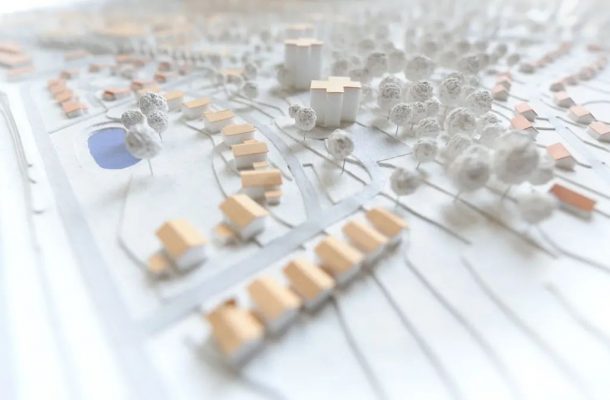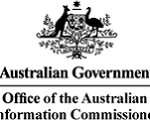Planning the “20 minute” cities of tomorrow

Melbourne is now five million people-strong with a bullet. By 2026 it’s expected to reach seven million, overtaking Sydney as the nation’s biggest city.
If the pace continues, 10 million of us will be living in Melbourne by 2051. At the same time, the city aims to lower its greenhouse gases to zero. The two scenarios are linked: measures to contain climate change will influence how the metropolis is settled and how we move around it.
Melbourne’s world-class liveability will also be tested as the population booms. How will our way of life be affected when there are twice as many people on the roads, and in need of work?
Urban planners want the growth to take place within existing boundaries, with about 70 per cent to be absorbed in already established suburbs.
The vision is for Melbourne to become a network of connected “20-minute cities”, where people will be able to walk or cycle to shops and services, reducing cross-town traffic. Public transport will run more frequently, so that commuters can arrive at a stop confident that a tram, bus or train will come along soon. The urban environment will become denser, more efficient and potentially more interesting.
Of course, some 20-minute cities already exist within Melbourne – places such as St Kilda, or Box Hill, where residents might leave the area to go to work, but can find schools, medical care and all the shopping, entertainment and green space they might need within walking distance.
In Melbourne’s inner suburbs, old-fashioned strip shopping centres, well-lit paths and open spaces already encourage inhabitants to leave the car behind. International research shows that parks and paths improve the health of the people who live near them, because they encourage walking, running and cycling. That’s good for the heart, and good for building a sense of community. Out on the street there are people to greet, and you’re more likely to notice what’s going on around the neighbourhood; this promotes a sense of belonging and wellbeing.
But what about the new neighbourhoods that are still springing up on the edge of Melbourne? Can a 20-minute city be created on a greenfields site?
A city rising from the green
Monash academics Carl Grodach, Rebecca Wickes and Liton Kamruzzaman are tackling the question. With the City of Melbourne and the Department of Environment, Land, Water and Planning, they’re investigating how to create a 20-minute city on 115 hectares in the City of Wyndham.
The site, which is called Mambourin, is 45 kilometres from Geelong, and 40 kilometres from the central business district. The blueprint shows 1200 residential lots and a V-line train station that’s yet to be built (the Geelong line runs through the development).
A retail district is planned with clusters of three or four-storey apartments nearby. Lot sizes increase in size as you move away from the centre. Land has been set aside for a government primary school, and for a private primary and secondary school as well.
A major challenge
Professor Grodach, the director of Urban Planning and Design, describes the Mambourin project as a “gigantic challenge”. As far as the researchers are aware, creating a connected community from scratch has never been done.
Typically, on greenfields sites, residents trickle in as new sections of the estate are developed. “Really, that community is not going to be built for 20 years or so, let’s say,” Professor Grodach says. In the meantime, early settlers wait and wait for promised infrastructure to arrive, are stranded without a car, and can feel alienated and forgotten.
Associate Professor of Criminology Rebecca Wickes has been contemplating practical uses for temporary sites while Mambourin is in its infancy. Dr Wickes is also director of the Monash Migration and Inclusion Centre. Her research encompasses urban studies, criminology and sociology. A particular focus has been on how some places “promote a kind of ownership, a sense of responsibility for looking after the neighbourhood and for doing pro-social, good things to keep crime down and to keep social problems at bay”.
“How do you sustain places like Mambourin in the long run, so that they don’t become these little enclaves that are disconnected from the rest of the major city?”
New neighbourhoods are vulnerable. White goods deliveries can be subject to theft in new streets where no one is home, for instance, and with no established residents looking out the window.
“So we were thinking, for example, of a garden centre with a cafe – where everybody’s building their new houses, they’ll need garden material,” Dr Wickes says. “That’s something that you could do in a reasonably quick way, with a pop-up approach.
“That might provide some sense of shared ownership for the neighbourhood, opportunities for those micro-exchanges to talk about what kind of plants might look good on their street … and for people to get to know each other, and to feel as though they have a common bond and a common sense of place.”
Dr Wickes says the most resilient communities allow for people from different backgrounds, and with different incomes, to live close to each other. (Again, Melbourne’s inner suburbs provide a prime example.) “How do you sustain places like Mambourin in the long run, so that they don’t become these little enclaves that are disconnected from the rest of the major city?” she asks.
The vital role of the train station
Associate Professor Liton Kamruzzaman, a researcher in transport and land use planning, says the train station “is the key” to Mambourin’s sustainable future. Because the Geelong line already exists, he’s reasonably confident the station will materialise, although there are no guarantees.
A connected issue is employment. Wyndham City Council is the fastest-growing municipality in Melbourne. Werribee, within Wyndham, has been nominated as a National Employment and Innovation Cluster. An Australian Education City is on the drawing board – where universities and research and technology companies will (ideally) combine to create 50,000 jobs.

But in the meantime, the lack of jobs in the area “is a giant problem”, Professor Grodach says. “Australian cities have very centralised job markets. Roughly 20 per cent of all jobs are in the Melbourne CBD, and then the next-largest job centre is Dandenong (3 per cent) and around Monash Clayton (2 per cent).”
Creating employment clusters is notoriously difficult, he says, and takes decades. In the meantime, Wyndham council is interested in creating co-working spaces, “because they have found that a lot of people in the area have home-based business and they want to support that local entrepreneurship”.
Dr Kamruzzaman suggests planning regulations could be relaxed “so that you can use a room in your house as a business centre”.
The best-laid plans …
The researchers recognise that masterplanned communities can go wrong. “Traditionally, planning has been heavy-handed, a top-down approach to rationally organising space, and it doesn’t always go well,” Professor Grodach says. “In fact, it usually doesn’t. So it’s about walking that balancing line. And I don’t think anyone has come up with the right formula, or ever will.”
But if Mambourin succeeds, positive lessons can be learned, he says. “This may be pie in the sky, but Mambourin could be a demonstration project – this balancing of transitional uses, community uses, in a place that’s comparatively higher-density for an outer-suburban community.”
Although planning can go awry, it’s also important. “Just look at our middle suburbs,” he says. “They’re now starting to get dense, but it’s completely random. You have property owners tearing down one house, and then they build two or three units, and the density isn’t clustered in any way; there’s no planning around it. I would hope to guard against that in the future.”
This article was published by Lens.
Open Forum is a policy discussion website produced by Global Access Partners – Australia’s Institute for Active Policy. We welcome contributions and invite you to submit a blog to the editor and follow us on Twitter, Facebook, Linkedin and Mastadon.












